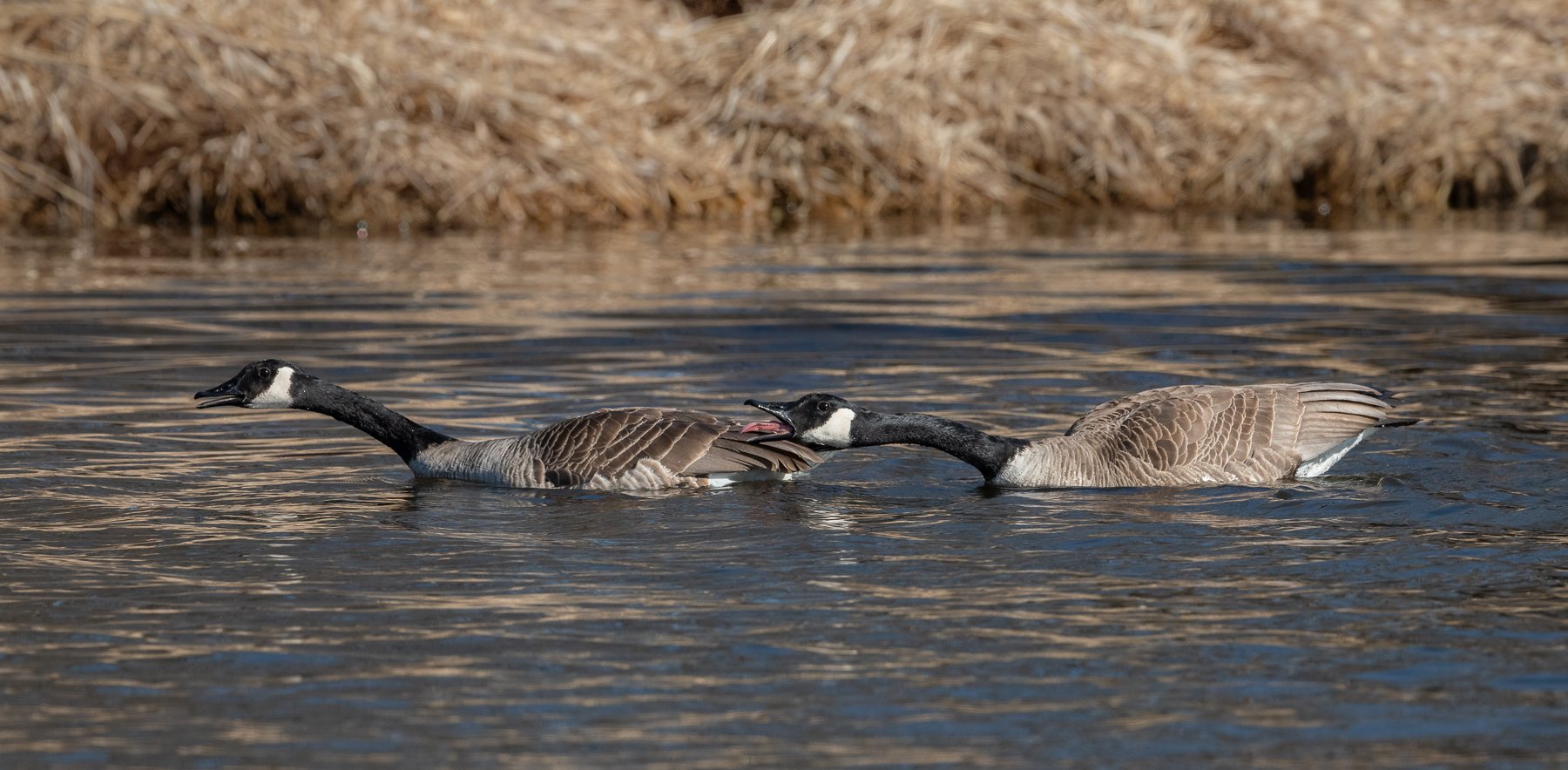In 1999, we created a shallow pond at Fair Meadows in a wet depression where the underground water table reached the surface and had created an environment that contained a small amount of water in all but the driest years. Our primary goal for the project was to enhance habitat for waterfowl and other wetland birds. Infested with a near-monoculture of reed canary grass, the site was highly degraded. After obtaining all the necessary permits, we hired a contractor to excavate the pond and haul the spoil to nearby upland, stipulating that the pond have “feathered” edges to ensure that mudflats attractive to migrating shorebirds would be exposed during exceptionally dry years. We planted plugs of bulrush, cord grass, and several forbs along the edges of the new body of water, which we named Mirror Pond.
Penny Shackelford and Ron Martin plant plugs of bulrush and cord grass at Mirror Pond in 2001 (photo by Gary Shackelford).
A view of Mirror Pond taken during a dry autumn. Notice the presence of exposed mudflats (photo by Gary Shackelford).
Now more than two decades old, Mirror Pond is a well-established addition to the landscape. Much of the reed canary grass has been eliminated, and bulrushes, sedges, native grasses, and wetland forbs border the pond and provide habitat for many species of animals. Dragonfly and damselfly nymphs and adults are abundant. Frogs, toads, water snakes, and three species of turtles have arrived, and we have seen river otters swimming in the waters. Wood Ducks and Hooded Mergansers have successfully nested in nest boxes. Sandhill Cranes and Canada Geese nest nearby, and we regularly observe several other species of waterfowl, including occasional Tundra and Trumpeter Swans. An array of six gourds placed near the pond is fully occupied by Purple Martins during nesting season. Kingfishers, herons, and egrets hunt for fish and other prey, and migrating shorebirds forage on the exposed mudflats during dry years.
I have spent many hours in a blind near the pond, photographing birds and other wildlife and just observing nature’s bountiful gifts that lie before me. On one memorable morning this past spring, I observed common baskettail dragonflies, newly emerged from the skins of their final aquatic nymphal stage, clinging to the stems of bulrushes while their bodies hardened before they began the next phase of their lives as winged adults.
Written by Gary Shackelford, Fair Meadows Sanctuary resident manager
Cover image by Gary Shackelford. Female Hooded Merganser and her ducklings.


















